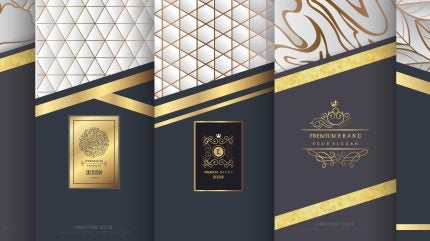
In today’s competitive marketplace, packaging is more than a container—it’s a reflection of brand identity and a key factor in consumer choice. Decorative foils have become a popular solution for brands seeking to combine visual appeal, tactile engagement, and functional benefits.
From luxury goods to everyday products, foils help packaging stand out and create a memorable impression.

Discover B2B Marketing That Performs
Combine business intelligence and editorial excellence to reach engaged professionals across 36 leading media platforms.
Understanding decorative foils
Decorative foils are thin metallic or coloured films applied to packaging surfaces to create eye-catching effects.
Common techniques include hot foil stamping, embossing, and holographic finishes, which can be applied to paper, cardboard, plastic, or metal substrates.
These foils come in a variety of finishes—gold, silver, holographic, matte, and pearlescent—allowing brands to craft unique packaging that aligns with their image.
The benefits of foil packaging
Visual appeal and brand distinction

US Tariffs are shifting - will you react or anticipate?
Don’t let policy changes catch you off guard. Stay proactive with real-time data and expert analysis.
By GlobalDataMetallic and coloured foils catch the eye, making products more noticeable on crowded retail shelves. Whether it’s a gold logo on a perfume bottle or holographic accents on a tech accessory, foils create a sense of sophistication and exclusivity. This not only draws attention but also reinforces brand identity, communicating quality and premium value to consumers.
Tactile engagement and perceived value
Foil finishes engage the sense of touch as well as sight. When combined with embossing or textured effects, foils create a three-dimensional experience that enhances perceived quality. Consumers often associate tactile, visually striking packaging with higher-end products, influencing purchasing decisions and brand loyalty.
Durability and functional advantages
Beyond aesthetics, foils can improve packaging durability. They help protect surfaces from scuffs, fading, or moisture while maintaining visual appeal. Certain foils can also serve functional purposes, such as tamper-evident seals or light-blocking barriers, ensuring product safety and enhancing consumer trust.
Applications across industries
Cosmetics and personal care
In beauty and skincare, packaging conveys luxury and quality. Foil-stamped logos and accents add elegance and make products more enticing to shoppers seeking premium experiences.
Food and beverages
Artisanal chocolates, fine wines, and gourmet foods often feature foil packaging to reflect their high-end nature. Foils elevate perceived value and signal craftsmanship and quality to consumers.
Pharmaceuticals and health products
Foils in pharmaceutical packaging protect products and provide tamper-evident features, combining visual appeal with functionality. This ensures product safety while reinforcing consumer confidence.
Sustainability and innovation
Sustainable packaging is increasingly important to consumers. Many decorative foils are now recyclable, and modern application techniques minimise waste and energy use. Brands are exploring eco-friendly foils and responsible production methods to meet environmental expectations without sacrificing visual or tactile impact.
The takeaway
Brands choose foils for packaging because they offer a unique combination of aesthetic appeal, tactile engagement, and functional benefits.
From enhancing shelf presence to reinforcing brand identity and protecting products, decorative foils remain a valuable tool in modern packaging strategies.
As sustainability and innovation continue to shape consumer expectations, foil packaging is set to remain a key choice for brands seeking to impress and inspire.





